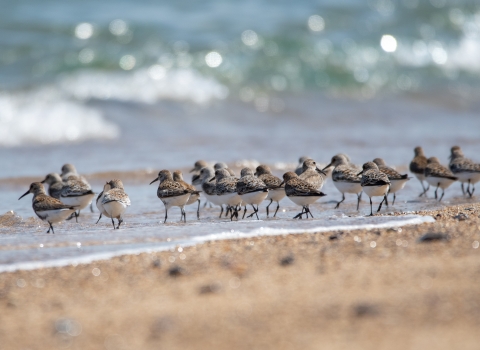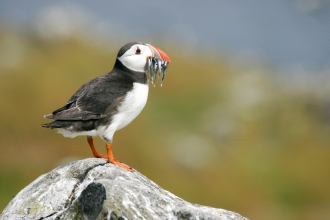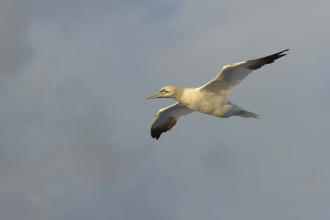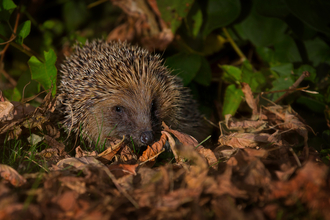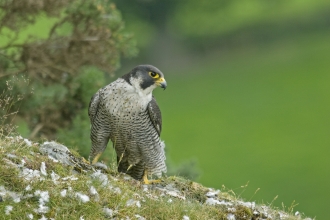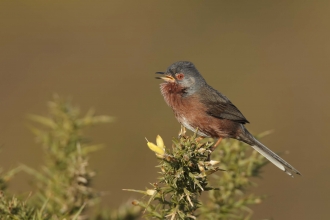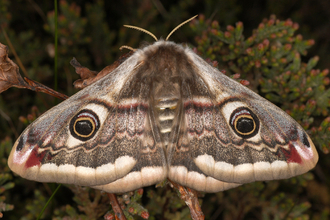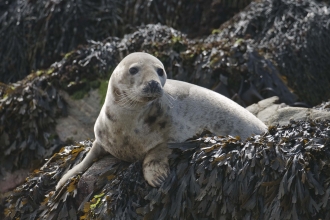Alderney's Wildlife
With around 1,000 hectares (10km²) of terrestrial and 16,000 hectares (160km²) of marine environment, Alderney contains a bit of everything. The island has at least 36 distinct habitats ranging from woodland to wetland; scrubland, grassland and heathland; sandy beaches and dunes to rocky shores; shingle banks to rocky seabed, leading to a wide range of resident species. The island's position also means it is an important migration stop-over for birds and insects, on route of the East Atlantic flyway.
Alderney became an island when the Dover-Calais chalk escarpment eroded over 10,000 years ago, allowing the north sea and Atlantic meet In what is now the English Channel. The relatively deep wooded valley which lay between what is now Alderney and the nearby Cherbourg peninsular rapidly flooded, cutting the island off from many species but at the same time making Alderney an ideal refuge for migrant wildlife flying along the new European coastline. The prolonged isolation and the island’s long human occupation not only supported diverse habitats but has also gifted our small island an abundant and diverse wildlife out of all proportion to the island's small size. Much of our wildlife is common within this region of Europe, but a few have evolved to be very specialised to Alderney or have regional, national or international importance. You can find our about our Priority Species which we take special action to protect for the future.
Iconic Species
All species are a vital part of the ecosystem but some, iconic or flagship species, define our island landscape. These may be species particular to the island, ones that play an important role in habitat creation or stabilisation, species of conservation priority or those that people want to see when they visit.

